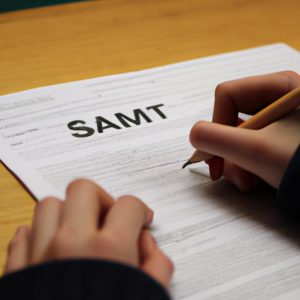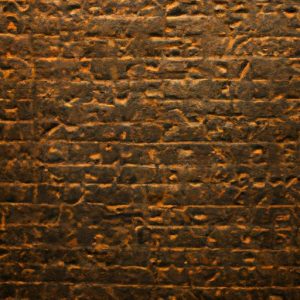Imagine a world without the elegance of handwritten notes, where the art of penmanship fades into oblivion. In today’s digital age, the significance of handwriting lines may seem diminished, but their impact on our lives remains profound. Whether you’re a parent, teacher, or simply someone seeking to improve your writing skills, understanding the importance of handwriting lines is crucial. So, let’s embark on a journey to explore the benefits and wonders that lie within the realm of handwriting lines.
A. Importance of Handwriting Lines
Handwriting lines serve as the foundation upon which legible and aesthetically pleasing writing is built. They provide structure, guiding the writer’s hand and ensuring consistency in letter formation. Just as the lines on a canvas help an artist create a masterpiece, handwriting lines provide a framework for our words to come alive.
Moreover, research has shown that the act of physically writing stimulates cognitive processes, enhancing our ability to learn and retain information. It connects the mind to the body, fostering a deeper understanding and leaving a lasting impression. By embracing the importance of handwriting lines, we unlock the potential for improved communication, creativity, and cognitive development.
B. Benefits of Practicing Handwriting Lines
The benefits of practicing handwriting lines extend far beyond the realm of penmanship. When we engage in deliberate and focused practice, our fine motor skills flourish. The intricate movements required to navigate the lines on a page strengthen the muscles in our hands and fingers, leading to enhanced dexterity and control.
Additionally, the act of writing on lines cultivates hand-eye coordination, as our eyes effortlessly guide the pen along the designated path. By sharpening this vital skill, we not only improve our writing but also enhance our overall motor skills, which can be applied to various activities in daily life.
In summary, handwriting lines are the cornerstone of effective penmanship, promoting cognitive development, fine motor skills, and hand-eye coordination. As we delve deeper into this exploration, we will uncover the various types of handwriting lines and discover their significance for children. So, let’s proceed to the next section and unravel the wonders of handwriting lines in greater detail.
Understanding Handwriting Lines
A. Definition and Purpose of Handwriting Lines
Handwriting lines, also referred to as ruled lines, are horizontal lines printed or drawn on paper to provide a visual guide for handwriting. These lines act as a framework, guiding writers to maintain consistent letter size, spacing, and alignment. They aid in creating legible and organized written work.
The primary purpose of handwriting lines is to provide writers with a reference point, ensuring that letters are proportionate and evenly spaced. By adhering to these lines, writers develop a sense of structure and discipline in their writing. This allows for improved readability and comprehension of written material.
B. Different Types of Handwriting Lines
Handwriting lines come in different variations, catering to the specific needs of writers across various developmental stages and purposes. Let’s explore some of the common types:
-
Primary Writing Lines: These lines are widely used in early childhood education. They typically consist of a bold top line, a dotted middle line, and a solid bottom line. These lines help young learners develop proper letter formation and size.
-
Standard Lined Paper: This type of handwriting line is commonly used in elementary and middle school education. It consists of evenly spaced horizontal lines, providing writers with a baseline for consistent letter height and spacing.
-
College-Ruled Paper: As students progress to higher education, college-ruled paper becomes prevalent. The lines are closer together compared to standard lined paper, accommodating more content in a smaller space.
-
Specialty Handwriting Paper: Various specialty papers exist to cater to specific handwriting needs. For instance, dotted lines are often used to assist writers in practicing letter formation and alignment.
By understanding the different types of handwriting lines, we can select the most suitable style for specific writing tasks and developmental stages. Now that we have a grasp of the basics, let’s move on to the next section and explore the significance of handwriting lines for children.
Importance of Handwriting Lines for Children
In the digital era, where typing has become the norm, the significance of handwriting lines for children may be overlooked. However, the benefits that handwriting lines offer to young learners are invaluable. Let’s explore why handwriting lines are essential for children’s development.
A. Development of Fine Motor Skills
As children grasp a pencil and navigate the lines on a page, they engage in a delicate dance that strengthens their fine motor skills. The precise and controlled movements required to stay within the lines promote the development of hand muscles, tendons, and coordination. These foundational skills not only facilitate writing but also extend to various activities like tying shoelaces, using cutlery, and playing musical instruments. The mastery of fine motor skills through handwriting lines empowers children to navigate the physical world with confidence and ease.
B. Enhancing Hand-Eye Coordination
Hand-eye coordination is a vital skill that allows children to synchronize their hand movements with their visual perception. Handwriting lines serve as a guide, training young eyes to track the movement of the pen and adjust their hand position accordingly. This synchronization between the visual and motor systems fosters efficient communication between the brain and muscles, leading to improved dexterity and precision. By honing hand-eye coordination through handwriting lines, children develop the necessary skills for activities such as sports, art, and everyday tasks that require hand-eye coordination.
C. Improving Letter Formation and Consistency
Handwriting lines provide a framework for children to shape their letters with precision and consistency. The lines act as a reference point, guiding children to maintain appropriate letter size, spacing, and alignment. Through consistent practice on handwriting lines, children develop muscle memory, allowing them to produce letters effortlessly and consistently. This not only enhances the legibility of their handwriting but also lays the foundation for efficient and fluent writing as they progress in their educational journey.
In conclusion, handwriting lines play a pivotal role in children’s development. They contribute to the refinement of fine motor skills, the enhancement of hand-eye coordination, and the improvement of letter formation and consistency. As we move forward, we will explore practical ways to implement handwriting lines into practice, enabling children to reap the full benefits of this powerful tool.
How to Implement Handwriting Lines in Practice
A. Choosing the Right Paper with Handwriting Lines
When it comes to implementing handwriting lines, selecting the right paper is paramount. Look for notebooks or sheets specifically designed for handwriting practice, adorned with clear and distinct lines. These lines should be evenly spaced and provide ample room for practicing various letter sizes and styles. Remember, the paper should be smooth and of good quality to ensure a comfortable writing experience.
B. Proper Hand Positioning and Grip
Hand positioning and grip play a crucial role in achieving fluid and effortless writing. Encourage a relaxed grip, where the pen is held between the thumb, index, and middle fingers. The grip should be firm enough to maintain control but gentle enough to allow for fluid movement.
In terms of hand positioning, it is ideal to position the paper slightly tilted to the right (for right-handed individuals) or left (for left-handed individuals) to ensure a comfortable writing angle. Both the wrist and forearm should rest on the table, providing stability and reducing strain. By mastering proper hand positioning and grip, we pave the way for effortless writing and improved penmanship.
C. Step-by-Step Guide to Practicing Handwriting Lines
To make the most of handwriting lines, it’s essential to follow a step-by-step guide that allows for systematic practice. Begin by focusing on basic line strokes, such as vertical and horizontal lines, gradually progressing to more complex shapes like curves and loops. Practice maintaining a consistent height and width for each line, using the designated handwriting lines as a reference.
Once comfortable with line strokes, move on to practicing letter formation using the same guidelines. Start with uppercase letters, then transition to lowercase letters, paying attention to proper spacing and alignment. Consistency is key, so practice regularly, dedicating time each day to hone your penmanship skills.
Remember, practice makes perfect. Embrace the journey of mastering handwriting lines, and with dedication and perseverance, you’ll witness remarkable progress in no time.
As we move forward, let’s explore valuable tips for teachers and parents, empowering them to create engaging activities that incorporate handwriting lines into everyday learning. So, without further ado, let’s dive into the next section and unlock the secrets of captivating young minds.
Tips for Teachers and Parents
Teaching and nurturing children’s handwriting skills require a thoughtful approach from both educators and parents. By incorporating engaging activities, integrating handwriting lines into lesson plans, and providing feedback and encouragement, we can create an environment that fosters growth and mastery. Here are some valuable tips for teachers and parents alike:
A. Creating Engaging Handwriting Line Activities
Learning should never be a dull experience, and this holds true for handwriting practice as well. To captivate young learners, it’s essential to infuse creativity and excitement into their writing exercises. Consider incorporating the following engaging activities:
-
Trace and Write: Provide worksheets with dotted handwriting lines for children to trace along with their fingers or a writing tool. Encourage them to gradually transition from tracing to independent writing.
-
Sensory Writing: Utilize textured surfaces or materials like sand, clay, or shaving cream to create a multisensory experience. Children can practice forming letters on these unique mediums, enhancing their tactile and kinesthetic learning.
-
Interactive Technology: Utilize educational apps and online platforms that offer interactive handwriting activities. These digital tools can make learning more enjoyable while providing real-time feedback to children.
B. Incorporating Handwriting Lines in Lesson Plans
Handwriting lines should be seamlessly integrated into lesson plans to ensure consistent practice and reinforcement. Consider the following strategies:
-
Start with Warm-ups: Begin each writing session with warm-up exercises that focus on specific letter formations and strokes. Use worksheets or interactive activities that incorporate handwriting lines.
-
Cross-Curricular Connections: Integrate handwriting practice into other subjects, such as spelling, vocabulary, or social studies. For example, ask students to write sentences using new vocabulary words or create handwritten timelines.
-
Progressive Difficulty: Gradually increase the complexity of handwriting lines as children advance in their skills. Begin with simple straight lines and progress to curved lines, loops, and eventually letter formations.
C. Providing Feedback and Encouragement
Constructive feedback and encouragement play a vital role in children’s development and motivation. Here are some effective ways to provide support:
-
Positive Reinforcement: Acknowledge and celebrate children’s progress and achievements in their handwriting journey. Praise their efforts, even for small milestones, to foster a positive learning environment.
-
Specific Feedback: Provide specific feedback that focuses on areas for improvement. Highlight the correct formation of letters, consistent spacing, and neatness. Encourage children to take pride in their handwriting.
-
Individualized Approach: Recognize that each child has different needs and learning styles. Offer personalized guidance and support to address their unique challenges and strengths.
By implementing these tips, both teachers and parents can create an environment that nurtures children’s handwriting skills. As we move forward, let’s uncover the significance of handwriting lines in daily practice and explore effective techniques for mastering this art.
Conclusion
In conclusion, handwriting lines hold a significant place in the realm of penmanship, offering a multitude of benefits for individuals of all ages. By providing structure and guidance, these lines serve as the scaffolding upon which legible and aesthetically pleasing writing is built.
For children, handwriting lines play a vital role in their development. They aid in the refinement of fine motor skills, enhancing dexterity and control, which are essential for various daily activities. Hand-eye coordination is also honed as children navigate the lines, allowing them to produce more consistent and visually appealing handwriting.
Teachers and parents can play a crucial role in incorporating handwriting lines into learning environments. By creating engaging activities and integrating handwriting lines into lesson plans, they can ensure that children have ample opportunities to practice and refine their penmanship. Providing feedback and encouragement further fosters a positive learning experience and helps children develop confidence in their writing abilities.
For individuals seeking to improve their handwriting, embracing the practice of handwriting lines can lead to significant progress. The deliberate and focused practice of tracing and writing along the lines can enhance fine motor skills, hand-eye coordination, and overall writing proficiency. By incorporating handwriting lines into daily practice, one can unlock the full potential of their penmanship.
So, let us not overlook the power of these simple lines on a page. Let us embrace the beauty and artistry of handwriting, for it holds the ability to connect us on a deeper level and leave a lasting impression. By recognizing the importance of handwriting lines and incorporating them into our lives, we can elevate our written communication and ignite a passion for the timeless art of penmanship.
Now that we have unraveled the wonders of handwriting lines, it is time for you to embark on your own journey of exploration and practice. Embrace the lines, let your pen glide effortlessly, and witness the transformation of your writing. Handwriting lines are not just guidelines; they are the gateway to unlocking the power of your penmanship.





